Yellow Submarine (Animated film)
1968 • For The Beatles • Directed by George Dunning
From Wikipedia:
Heinz Edelmann (20 June 1934 – 21 July 2009) was a Czech-German illustrator and designer. His art direction and character designs for the Beatles’ 1968 animated film Yellow Submarine brought him additional recognition around the world.
Life and career
Edelmann was born in Ústí nad Labem, Czechoslovakia, into the German-Czech family of Wilhelm and Josefa (née Kladivová) Edelmann. In 1946 his whole family – regardless of mixed ethnic roots – was expelled into Germany and they settled in its western part. From 1953 to 1958 studied printmaking at the Kunstakademie Düsseldorf (Düsseldorf Arts Academy). He began his career as a freelance illustrator and designer for theatre posters and advertising in Germany.
Between 1961 and 1969 he was a regular illustrator and cover designer for the internationally renowned youth magazine twen. During 1967–68, he worked on the film Yellow Submarine. From 1968 to 1970 he was a partner in a small animation company in London, but his desire at the time to work on more feature films was not realised. In 1970 Edelmann moved to Amsterdam and designed book jackets and posters for plays and films. His last use of the style of Yellow Submarine was in illustrating a book, Andromedar SR1 (1970), about a voyage to Mars. He also designed the cover for a German edition of Tolkien’s The Lord of the Rings, and illustrated the Kenneth Grahame children’s book The Wind in the Willows.
Between 1972 and 1976, Edelmann taught industrial graphic design at Fachhochschule Düsseldorf (Düsseldorf University of Applied Sciences). He was subsequently Lecturer of Art and Design at Fachhochschule Köln (Cologne University of Applied Sciences) and in 1989 became Professor of Illustration at the State Academy of Fine Arts Stuttgart. He designed the 1992 Seville World’s Fair mascot, Curro.
Edelmann died from heart disease and kidney failure in Stuttgart, aged 75. […]
From The Independent, August 5, 2009:
The Beatles’ success depended not only on their own exceptional talent but on the very gifted team that they gathered around them. With its startling innovations, the feature-length, animated film Yellow Submarine (1968) took cartoon work to a new level, and its stylistic achievements were largely due to its art director, Heinz Edelmann.
Heinz Edelmann was born in Czechoslovakia in 1934, and from 1953 to 1958 he studied and then worked at Düsseldorf Academy of Fine Arts with a keen interest in print making. In 1958 he became a freelance graphic designer and by the time he was 30, he was among the most promising designers in Europe. He did innovative work for the avant-garde German magazine Twen, including drawings on the horrors of war. […]
[…] Al Brodax, the producer of Yellow Submarine, said in 1999, “I told them that I could do the work and they could go off and see the Maharishi or whatever they wanted to do. Everybody would be happy if they just signed here.“
Both Brodax and the director of the film, George Dunning, knew that something more substantial than a longer version of the existing series was needed. They developed a story from the Beatles’ recent hit single, “Yellow Submarine”, and having seen Twen, they asked Edelmann for designs.
Edelmann submitted two-dimensional pictures of each Beatle in contemporary dress and he was appointed art director. Unquestionably, Edelmann was an inspired choice. He was a quiet, considerate man, who was quick to praise and eager to work hard to achieve the best results. He would not go to the pub with the rest of the production team, but would say, “I have work to do.” He claimed to have survived on four hours sleep a night every second night for over a year.
Inspired by the comic strip Flook, he created the Boob, who is used to such effect in the “Nowhere Man” sequence. Many of Edelmann’s illustrations shaped the plot, which was written, amongst others, by Erich Segal and Roger McGough. The animation director, Bob Balser, told me in 1999, “When we were running out of money, Heinz said, ‘I have an idea, we can fill the screen with numbers and it will be very cheap.’ He was full of ideas. Heinz invented the Blue Meanies and that gave us a logical battle against Pepperland. It is the same story as Star Wars really; you’ve got the Beatles instead of the Jedi Knights, and the force is music.” The scriptwriters found inspiration in the Beatles’ existing songs and the message of the film, “Love is all you need“, came from “All You Need is Love”.
Initially, the Beatles had been sceptical about Yellow Submarine, not wanting to add their own voices to the soundtrack and being half-hearted about writing new songs. When they realised how good and innovative it was going to be, however, they decided that they did not want it to be highly acclaimed without their input. They made a brief personal appearance at the end of the film.
Being the first full-length feature cartoon made in the UK since Animal Farm (1954), Yellow Submarine opened to high expectations from public and critics alike. Although it appealed to children, it was also a commentary on the 60s and even though Edelmann had no personal experience of hallucinogenic drugs, it depicted a psychedelic landscape. Very different from the output of the Disney studio, Yellow Submarine showed what could be done with animation and it led to feature-length cartoons from other studios, including Ralph Bakshi’s Fritz the Cat (1972). Both Terry Gilliam (Monty Python’s Flying Circus) and Alan Aldridge (The Butterfly Ball) drew inspiration from Edelmann’s work.
Edelmann hoped that the success of Yellow Submarine would lead to further work on feature films, but the projects did not materialise and he satisfied himself with other projects. He was to make commercials, off and on, throughout his life. […]

What were you initially hired to do exactly. what did they tell you they were hiring you for?
This is what they didn’t tell me. I went to London to discuss this and said, “Yes. what do you want from me? Do you want me to do the design?” I wasn’t interested in the cash. I wanted to pick up a few things about animation. I’d made some short films of my own (now all lost), and wanted to learn more. This was my main interest and I saw this as a short-term thing. So I asked them, “What do you want me to do? Do I do the characters?” “No, we’ve got our own people doing that.” “So do you want me to do the backgrounds then?” “No, no, we’ve got our own people doing those.” So I said, “Well then, what do you want me to do?” and they said, “Oh, you do the little odd things you do.”
What odd things were you doing?
I didn’t honestly know what the little odd things were supposed to be, but suddenly they asked me to do the Beatles characters. I did those in Dusseldorf and they liked them, apparently. Then I went back to London without a work permit expecting them to say they’d had enough. How many odd things can one do? I stayed three or four weeks and in that time almost nothing at all was happening because they couldn’t agree to a script. They only knew the film was to be called Yellow Submarine.
But suddenly a presentation to the producers was coming up, so I was told to draw Davey Jones in Davey
Heinz Edelmann – From Electrical Banana: Masters of Psychedelic Art”, February 2012
Jones’ locker and other things that, quite honestly, I had never heard of. I never knew what it was or what it was supposed to be. So, on Friday night, I was full ot hate at everyody an thought, “Well, I’ll resign but I’m not going out with a whimper, I’ll go out with a bang. That is when I did the Meanies, and the Meanies were originally supposed to be communists. I always wanted the Meanies to win, but I didn’t get my way. They came to be blue because I knew that red would burn up the screen in CinemaScope. So I told the girl working for me to do them in a kind of purplish hue with Dr. Marten’ s dyes which I had brought in from Germany since they were unavailable in London. But she was unfamiliar wth them an so instead of purplish, they turned out blue and there was really nothing to be done.
The film was made opposite where my office was in London. They had hired a floor there. We had held initial talks with the creative leads. There were the people from King Features who had started the whole thing by doing a cute Beatles TV series, then they wanted to do a feature. So I thought “Wow! Great – we could do a sort of Disneyesque fabulous feature magical and this and that”. But they – rightly I think – decided it had to reflect the spirit of the times. They wanted to make something more adventurous. They then formed a team of some classic animators and then some very innovative guys, and Heinz Edelmann was the leader of the innovative group. But they were just across the square from my office so I would just go in there and pay visits and see him sitting there at his desk. I remember seeing the Blue Meanies emerge. I’d give feedback. I remember him as being a cool cat, a zany guy.
Paul McCartney – From Electrical Banana: Masters of Psychedelic Art”, February 2012
Did they like the work you had done?
Eh, they hardly bothered to look at it. In the end I felt the film could have been better. The last twenty minutes are a mess. After they had already closed down the studio and let everybody go, they found out the film had no ending. This was very bad planning, so Charlie Jenkins, with a little bit of help from me, cobbled together the psychedelic end sequence from bits and pieces of the test film we shot and with all these psychedelic color changes. And then I did conspire enough to get Hey Bulldog cut out of the film. I think it’s God-awful, and it was done while I was gone, not by the second unit but by the third unit and they look like characters from the serial. Anyhow, this has now sadly been triumphantly restored on the DVD version.
And of course the cultural history o the 20th century has a list of all the artists who collaborated on the design of Yellow Submarine (none of whom did) and the press hated me. and they were saying. “You can tell from the design of the film that the designer is German”. I was surprised by the hostility, and even in America it was believed that the Beatles had created it themselves, but I didn’t mind that. I was happy to get this load off my shoulders and pick up my life.
Heinz Edelmann – From Electrical Banana: Masters of Psychedelic Art”, February 2012
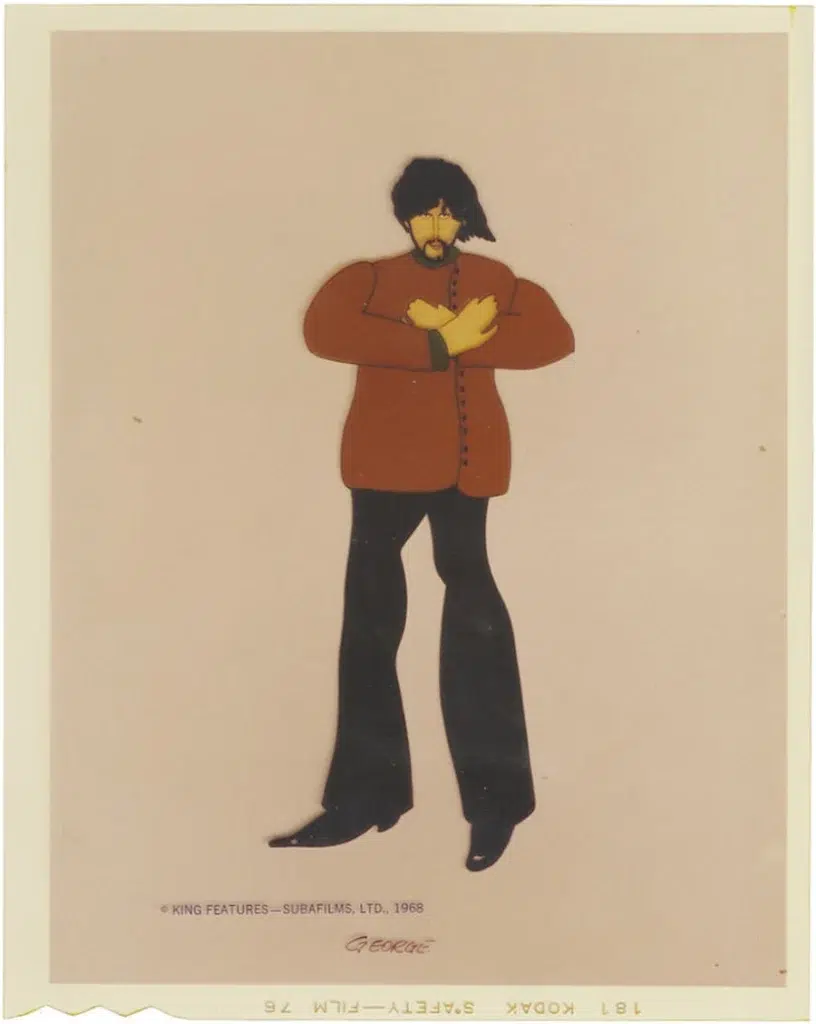

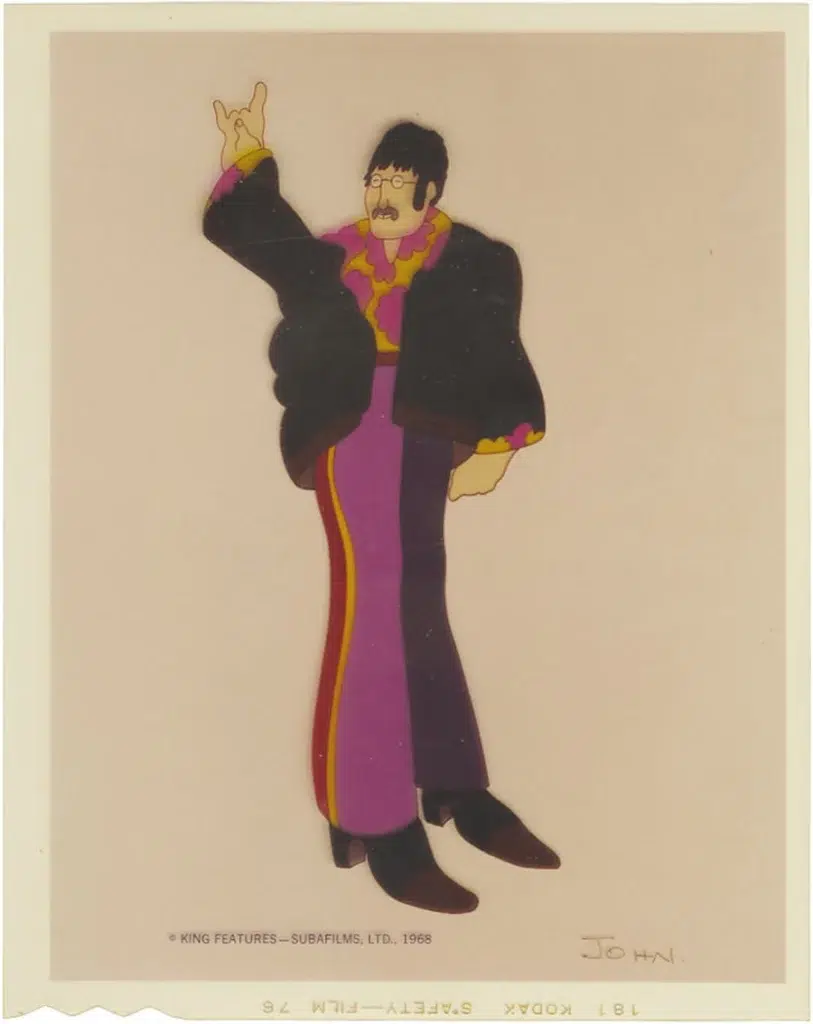
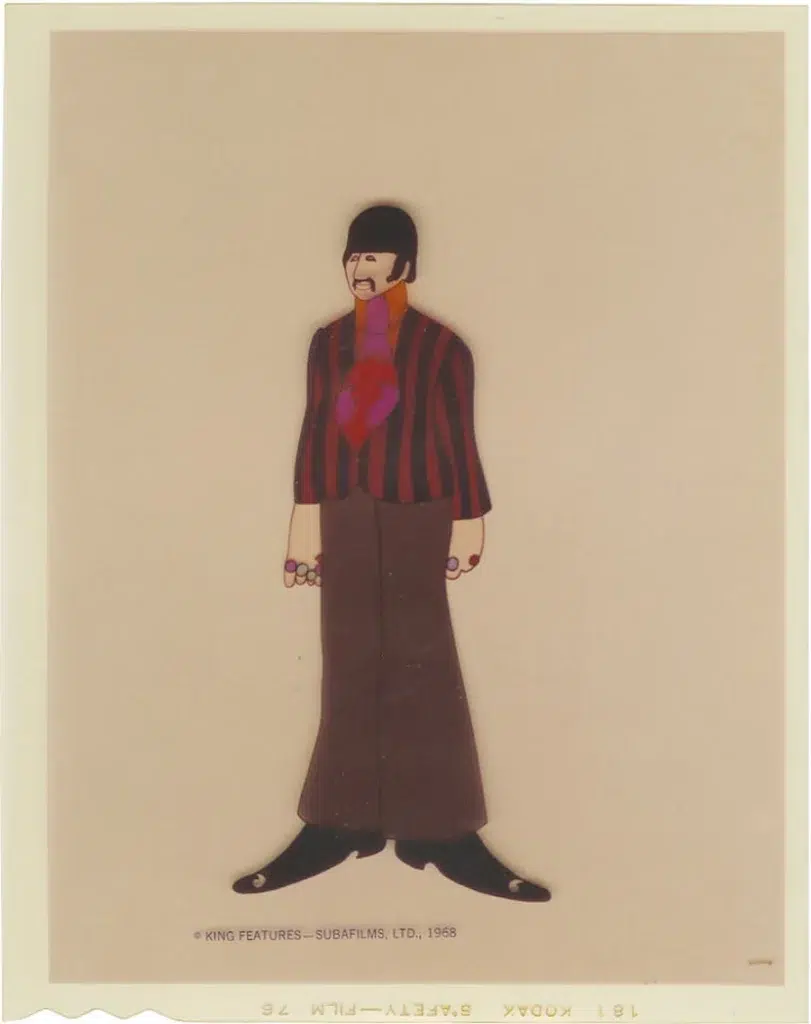
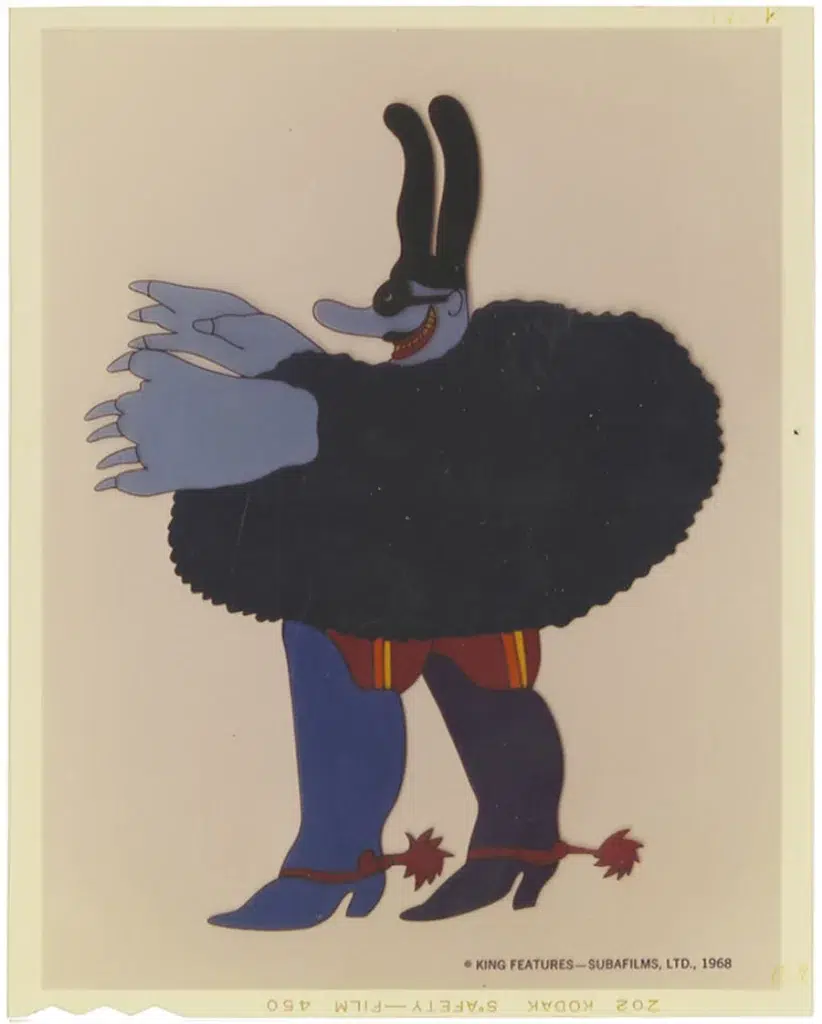
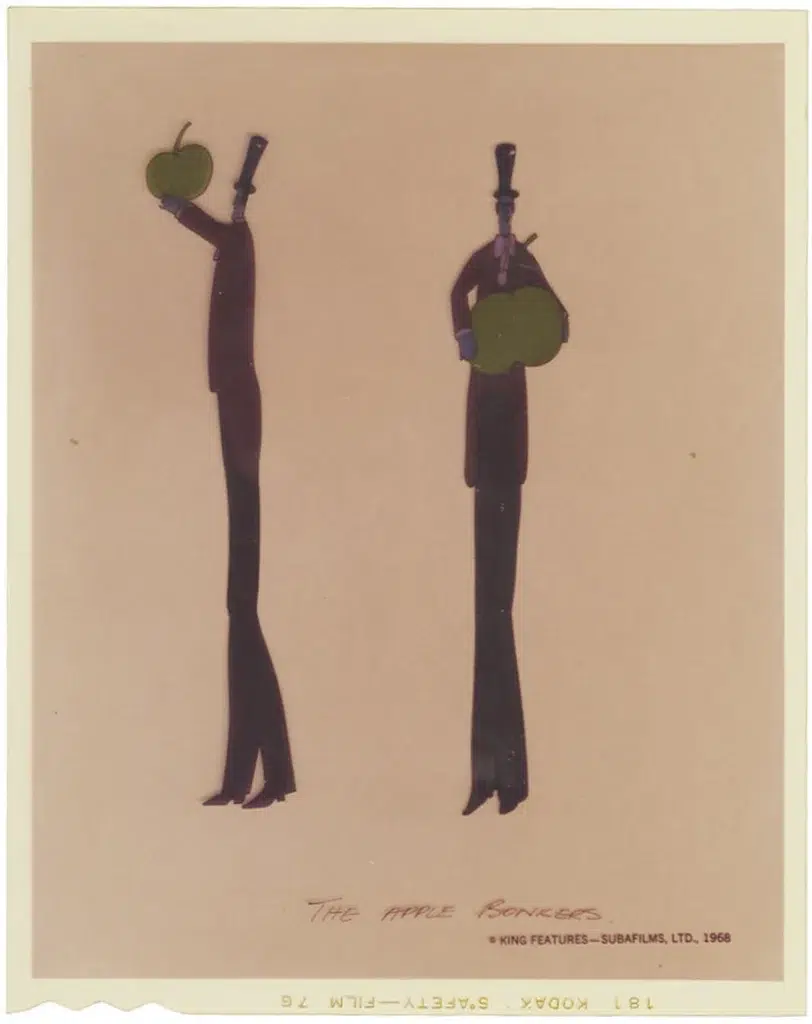
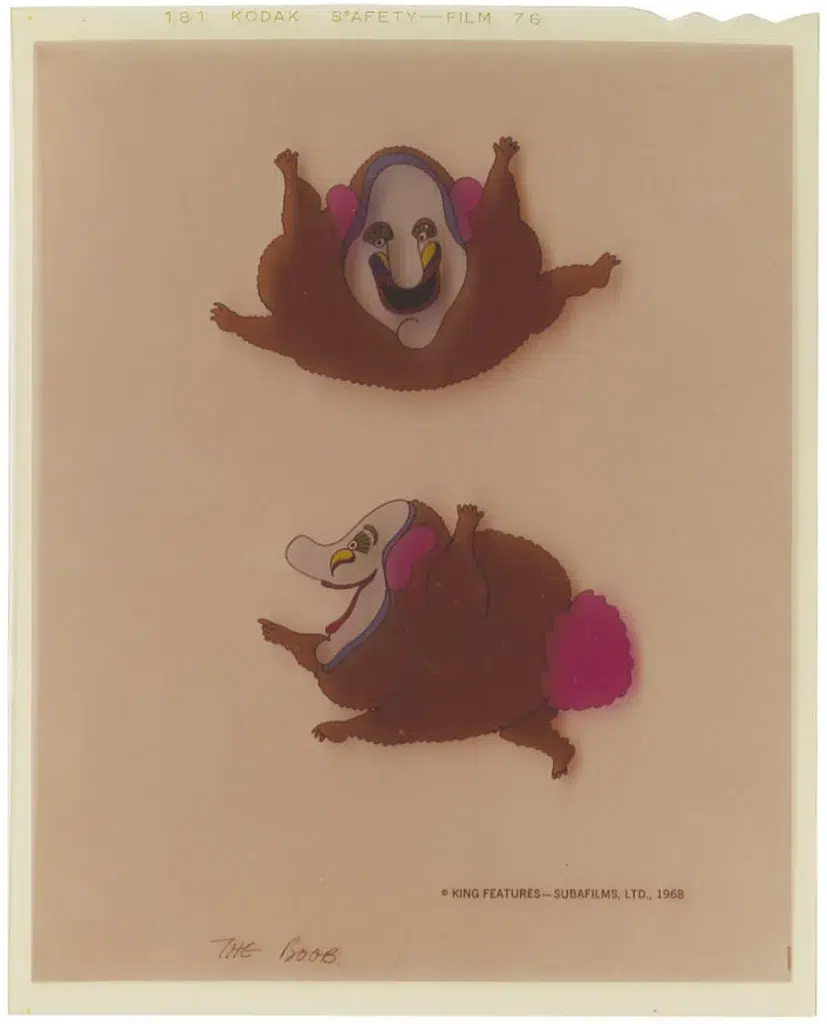
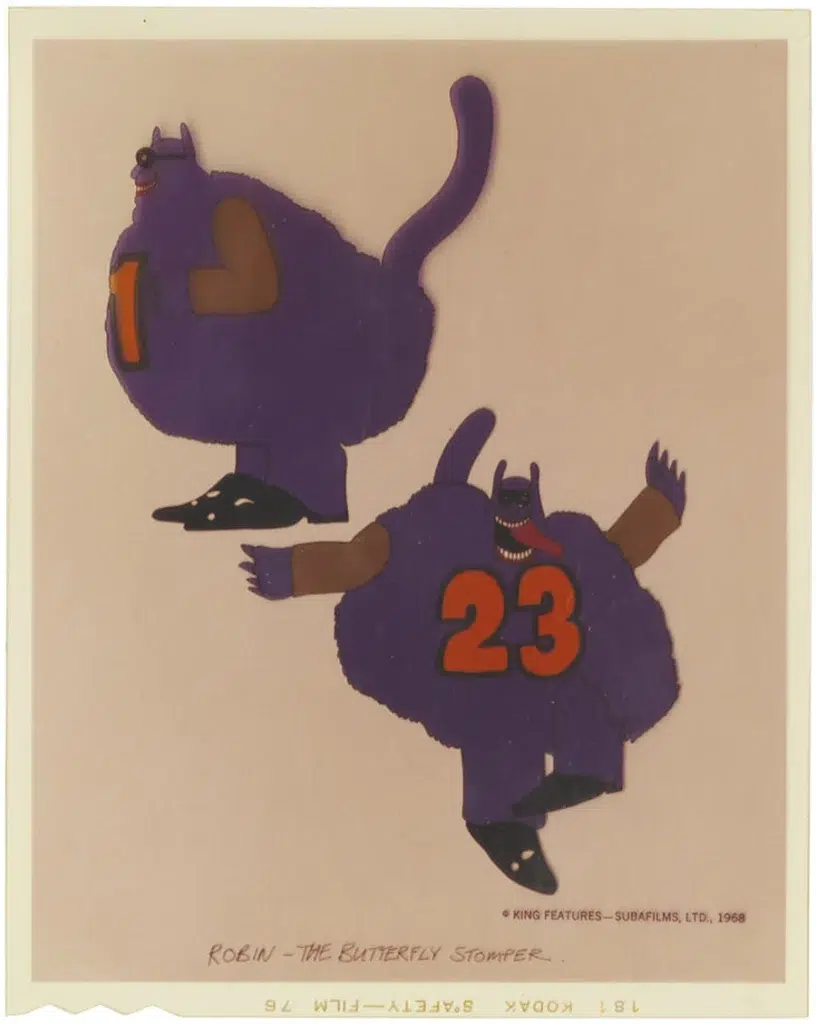
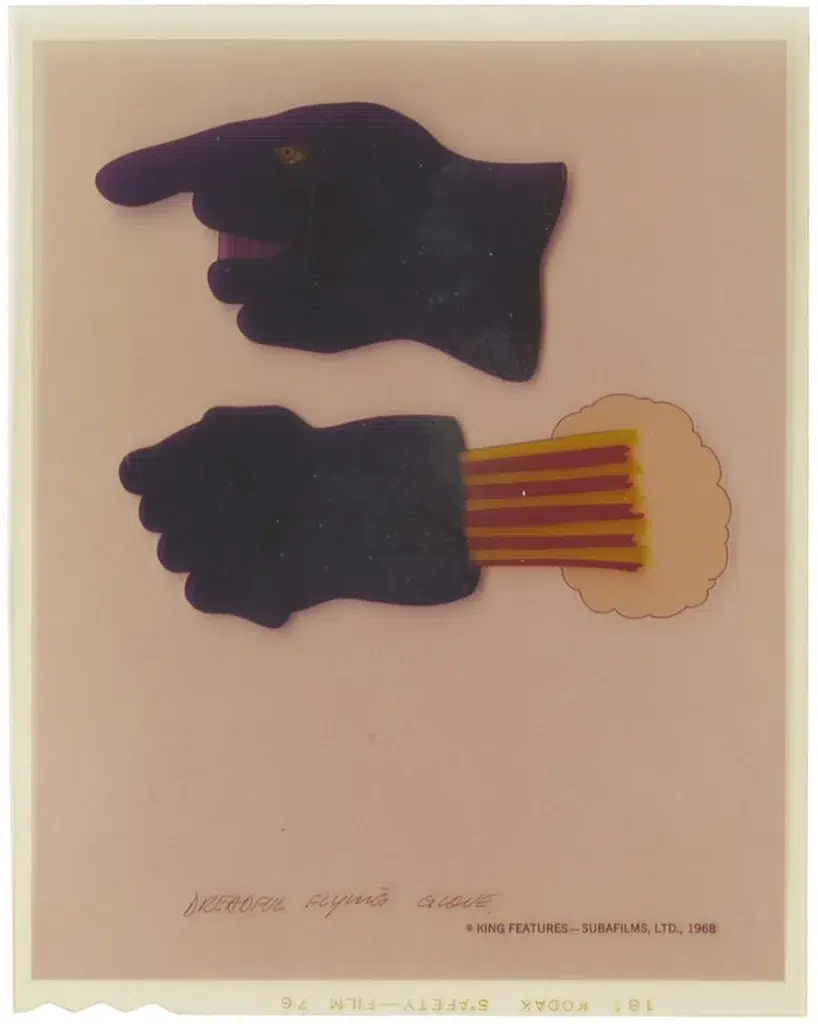
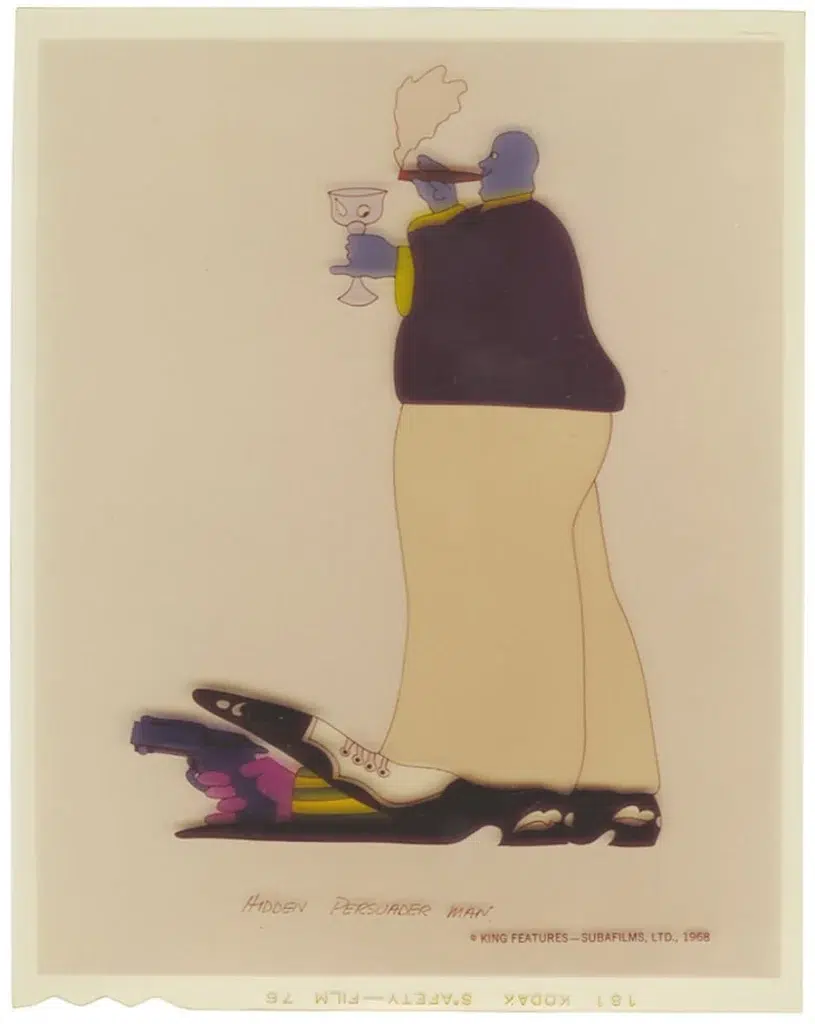
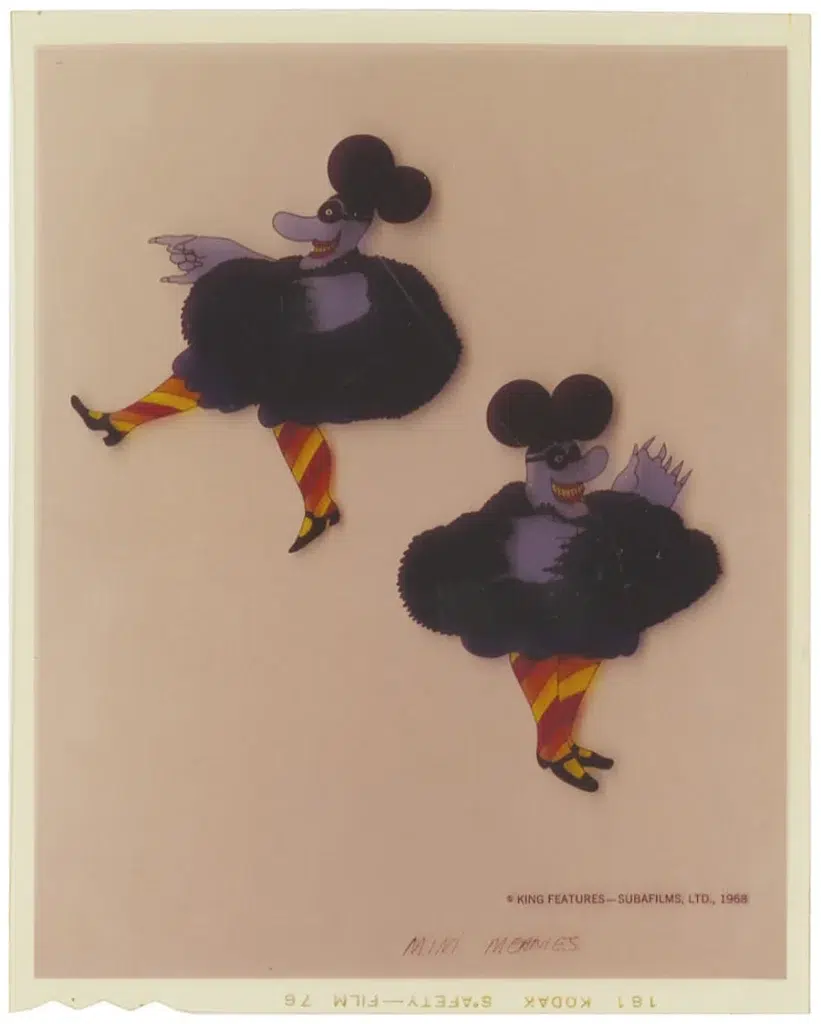
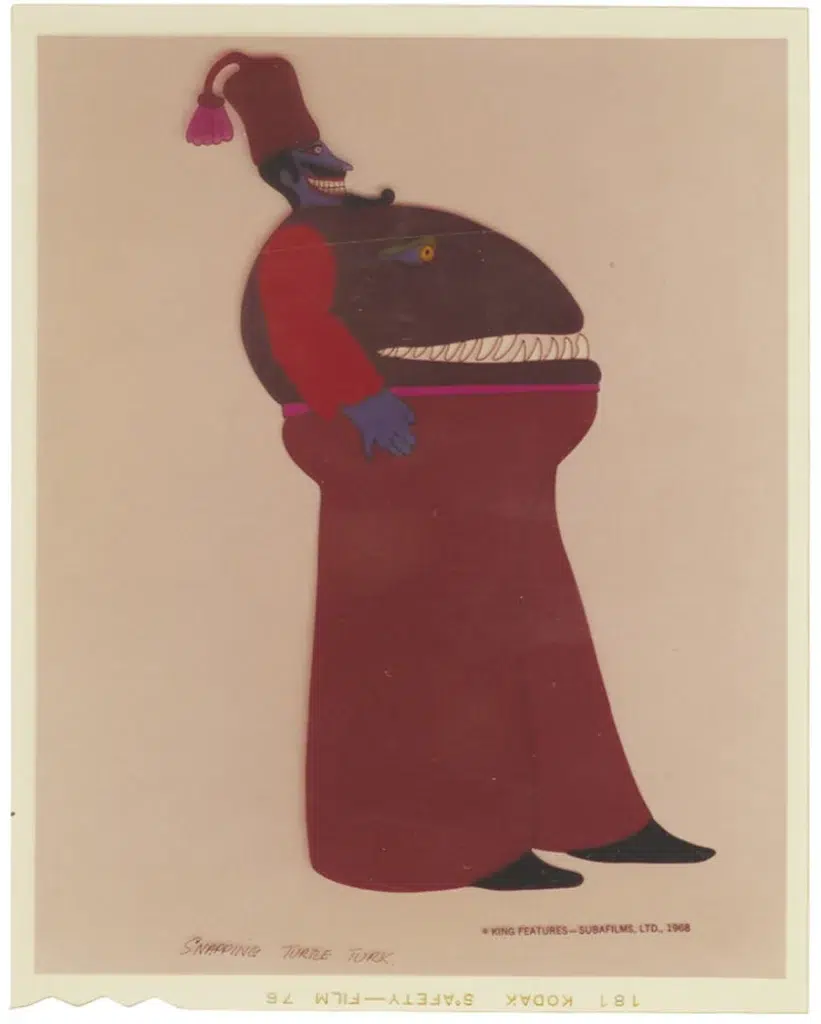

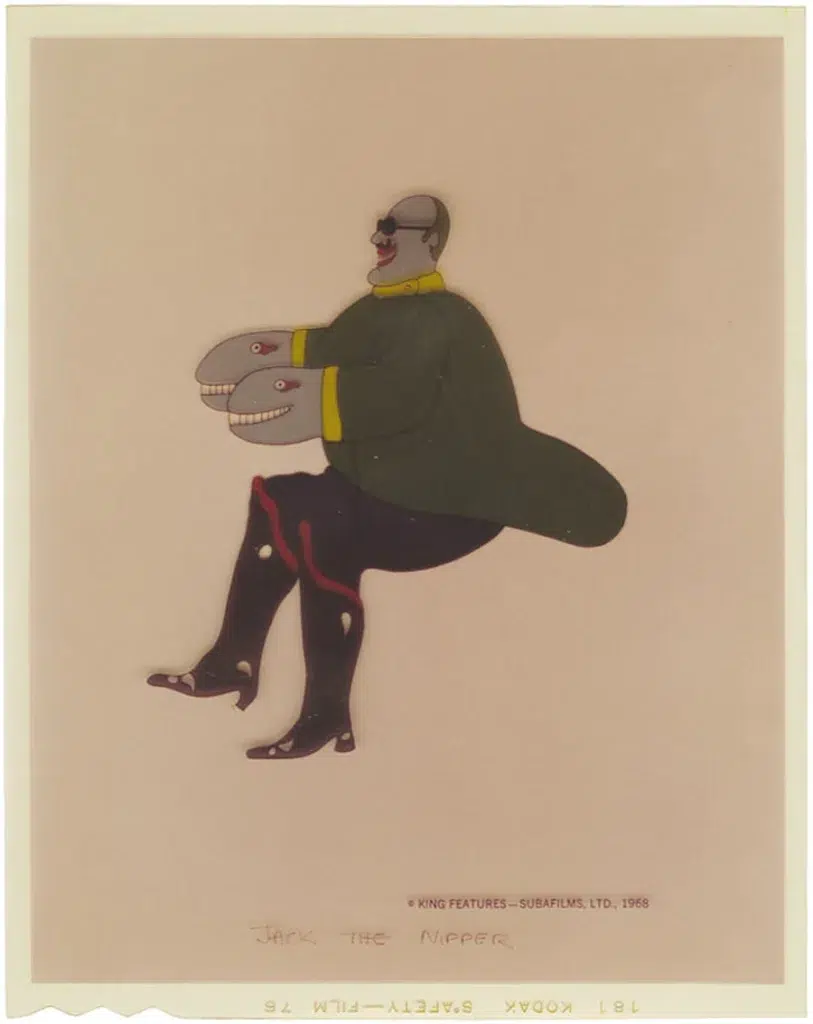




Notice any inaccuracies on this page? Have additional insights or ideas for new content? Or just want to share your thoughts? We value your feedback! Please use the form below to get in touch with us.